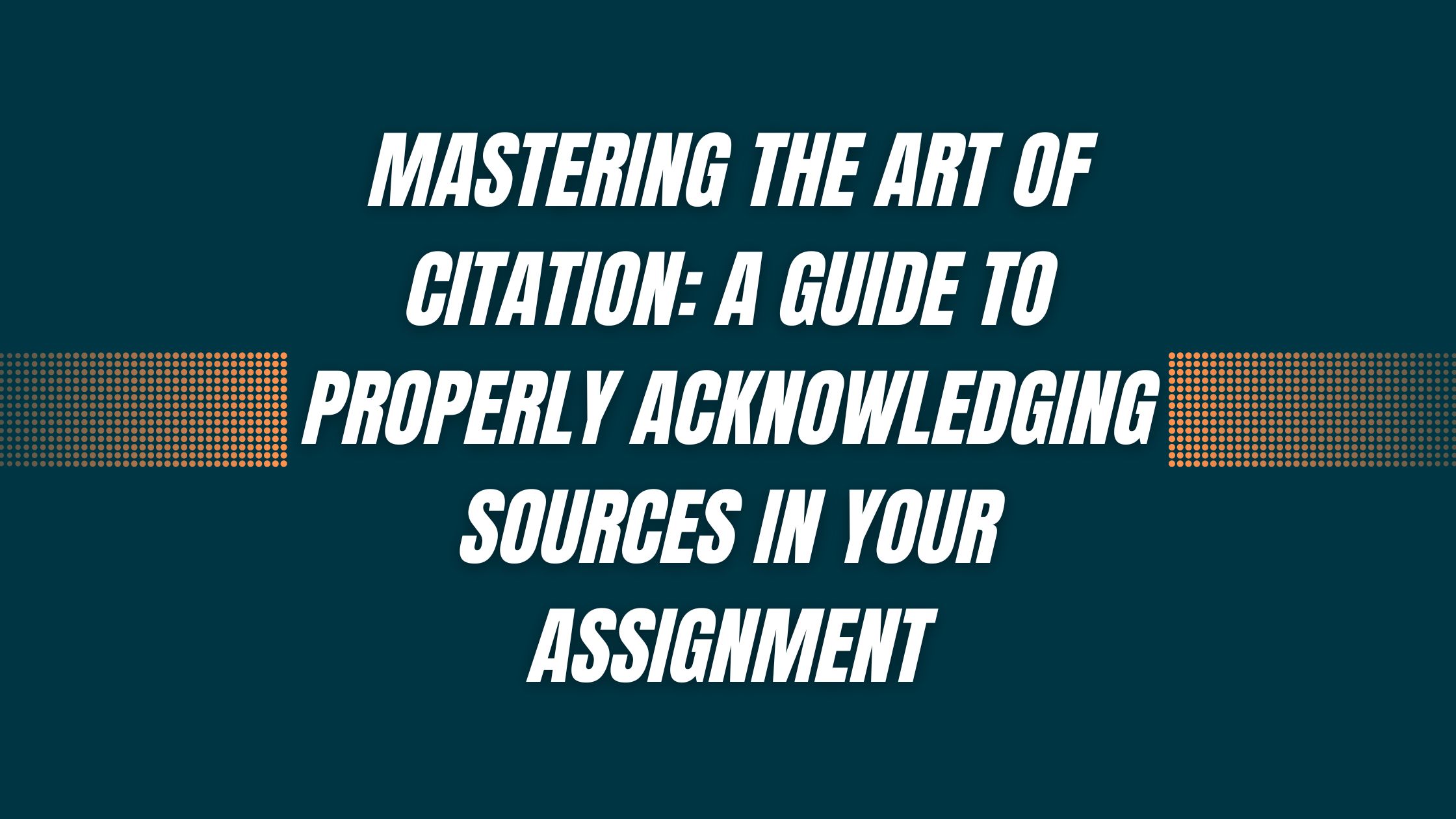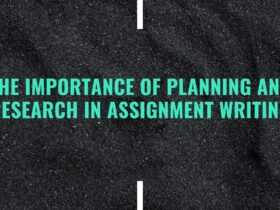Citing sources in an assignment is an important aspect of academic writing. It not only acknowledges the ideas and work of others, but it also demonstrates the credibility and authority of the author’s own arguments. Proper citation also helps avoid plagiarism and ethical violations. However, being a crucial aspect of academic writing, it is one of the toughest parts of assignment writing as well. Students find it difficult to cite their assignments properly and thus pay someone to do assignment that can cite the sources correctly in their assignments.
However, in this article, we will discuss the key aspects of citing sources in an assignment and will make you aware of how you can cite your assignment properly.
Why citations are necessary for assignment writing?
Citations are important in an assignment because they acknowledge the work of others and give credit to the original author, which is essential for ethical and academic reasons. By supplying proof to back up claims and displaying the breadth of the study, they help establish the writer’s authority and reliability. Citations assist readers in finding sources for additional reading and fact-checking supplied material. For academic integrity and to ensure the ethical use of material, proper citation is essential. Furthermore, citations are crucial for academic writing and significantly raise the quality and validity of the work.
How to Properly Cite Sources in an Assignment
- Understand the citation style
There are various citation formats, and each has its own standards, regulations, and norms. APA (American Psychological Association), MLA (Modern Language Association), Chicago, and Harvard are a few of the common citation formats. You should check with your professor to find out which citation style to use before beginning your assignment. Once you have decided on a citation style, make sure to refer to the style guide for specific formatting guidelines for references, citations, and in-text citations.
- Types of sources
You may be required to cite a variety of sources in your assignment. Books, journals, newspapers, websites, conference papers, reports, and personal communication are some examples of common sources. Different citation components, such as the author’s name, publication date, title, publisher, URL, page number, and edition, may be needed for each type of source. As a result, it is critical to becoming familiar with the citation specifications for each kind of source.
- In-text citations
In-text citations are brief references to the sources you have cited within the body of your assignment. They let the reader know that you have cited outside materials to back up your claims or theories. Normally, the author’s name, publication date, and page number are included in in-text citations. You must still cite a source in-text even if you are summarizing or paraphrasing it. However, the structure will depend on the citation style.
- References
A list of the sources you cited in your assignment is called a reference. They are usually positioned at the conclusion of the assignment and are listed alphabetically by the last name of the author. The structure and organization of the reference list must adhere to the specific guidelines of each citation style. For instance, APA style calls for the author’s last name, first initial, publication date, title, publisher, and DOI or URL to be included with every book citation. The author’s last name, first initial, publication date, article title, journal title, volume number, issue number, and page range would all be included in a journal article reference. However, verify again the requirements for the relevant source type’s citation style.
- Plagiarism
Plagiarism is the practice of using another person’s thoughts, words, or works without giving due credit or citation. A significant academic offense like plagiarism can get you failing grades, a punishment, or even have you kicked out of school. Make careful to cite all sources used in your work, including any direct quotes, paraphrases, and summaries, to prevent being accused of plagiarism. Using your own words to describe and evaluate the data you have gathered from outside sources is also crucial. Also, if you are unable to write a plagiarism-free assignment on your own, you can count on assignment help in Canada for assistance.
- Citation tools
Citation tools are software programs or online resources that help you generate citations and references. They can be a useful time-saving resource, particularly if you are working on a long or complicated assignment with plenty of sources. However, it is important to note that these tools are not foolproof and may generate incorrect or incomplete citations. Always double-check the accuracy of the citations generated by these tools and make necessary corrections.
Properly citing sources in an assignment is essential for maintaining academic integrity, avoiding plagiarism, and demonstrating credibility and authority of your own. Therefore, while citing the sources in your assignment, make sure you are doing it properly.















